Houston Food Bank
Address
Houston, TX 77029
Census Tract
Poverty Rate
Median Income
Total Project Cost
Federal NMTC Financing
Project Completion
June 2017
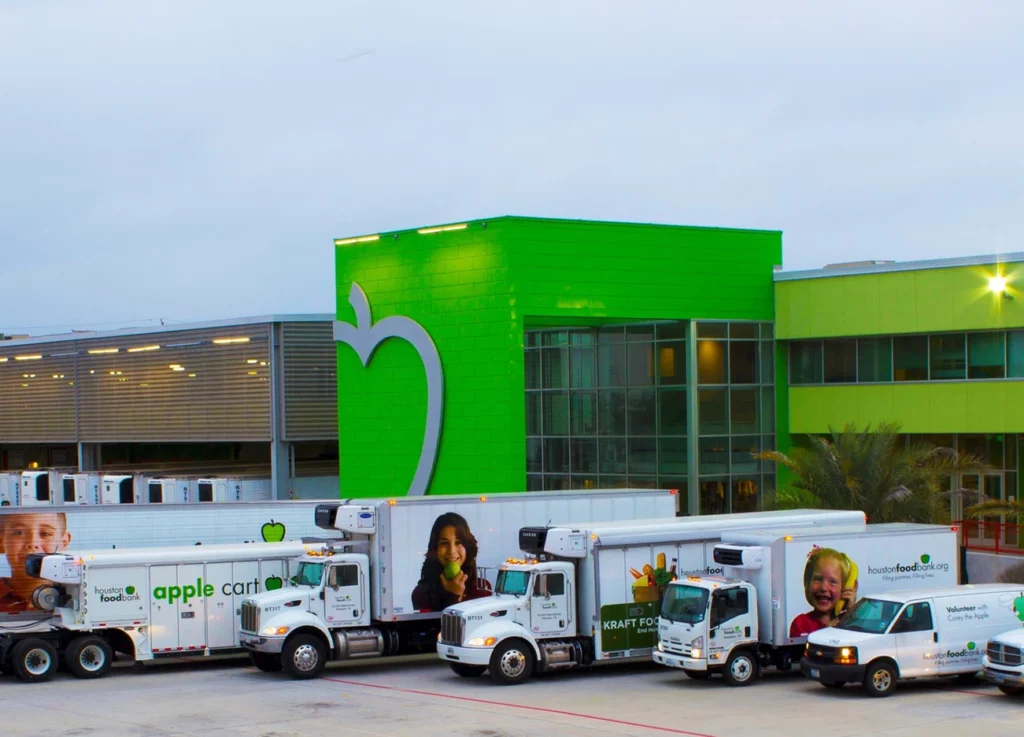
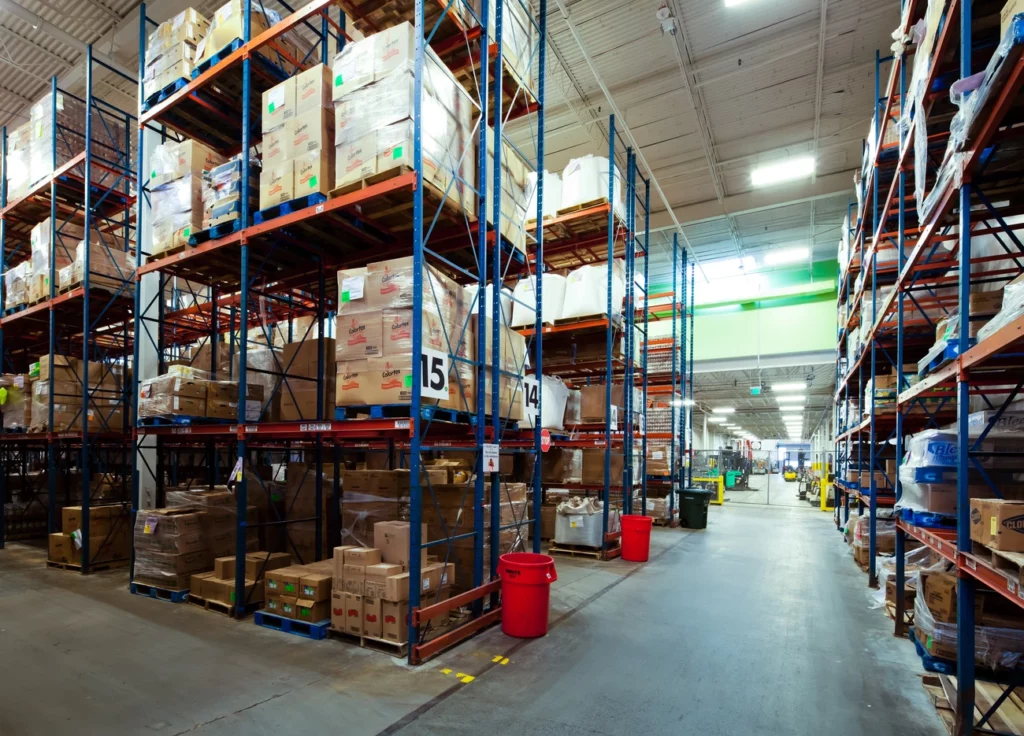
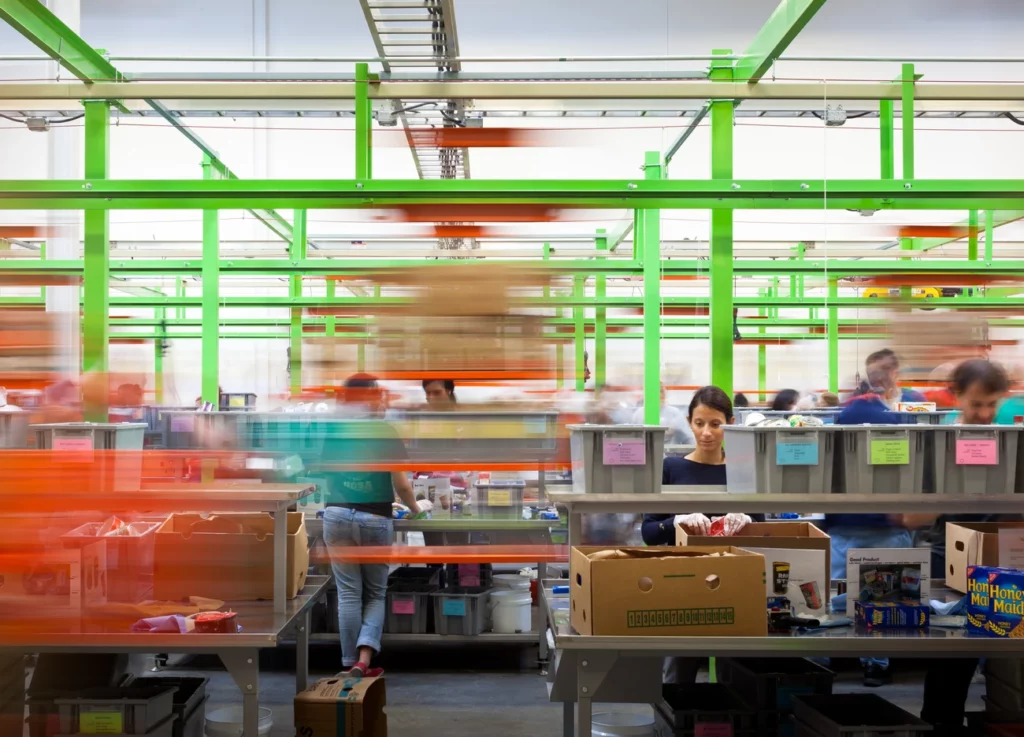
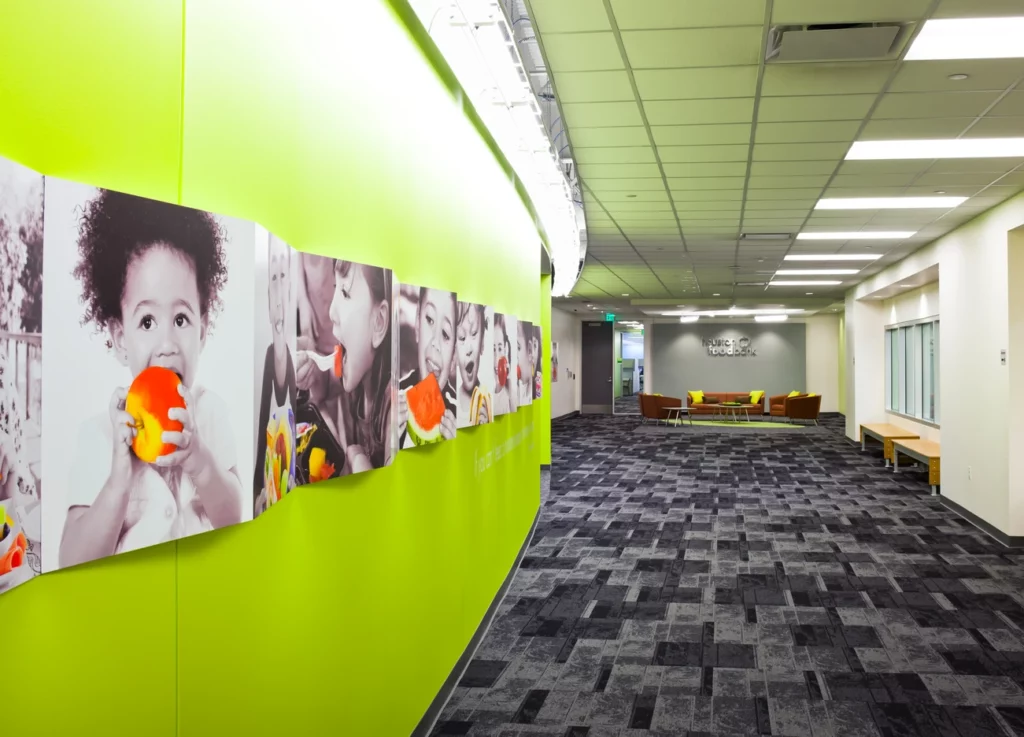
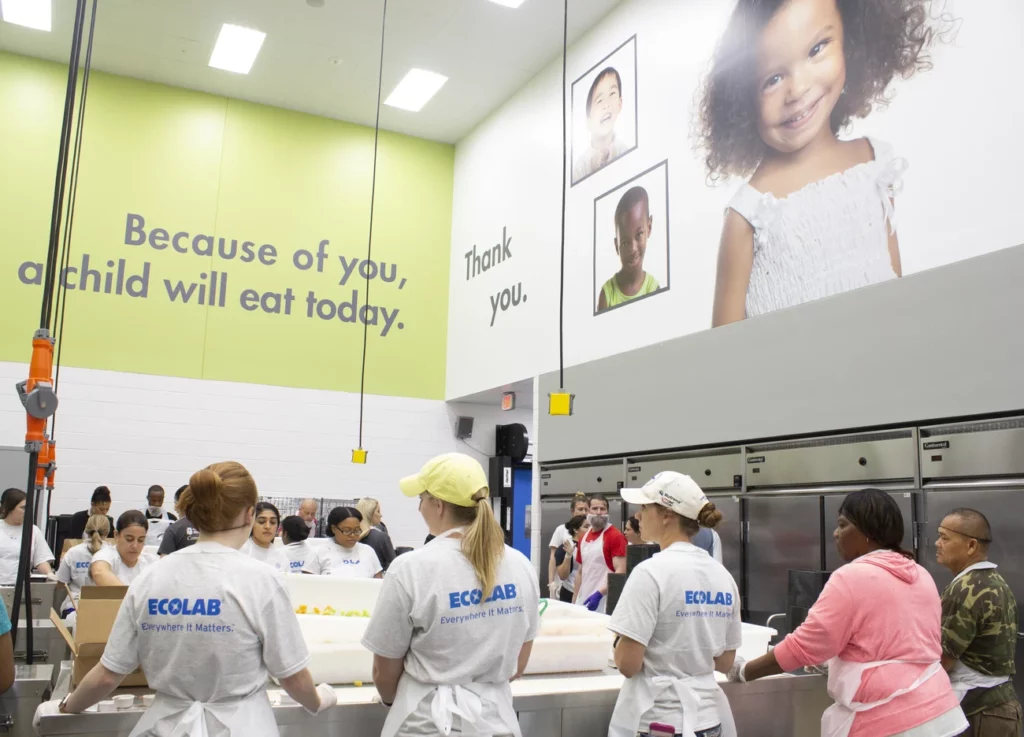
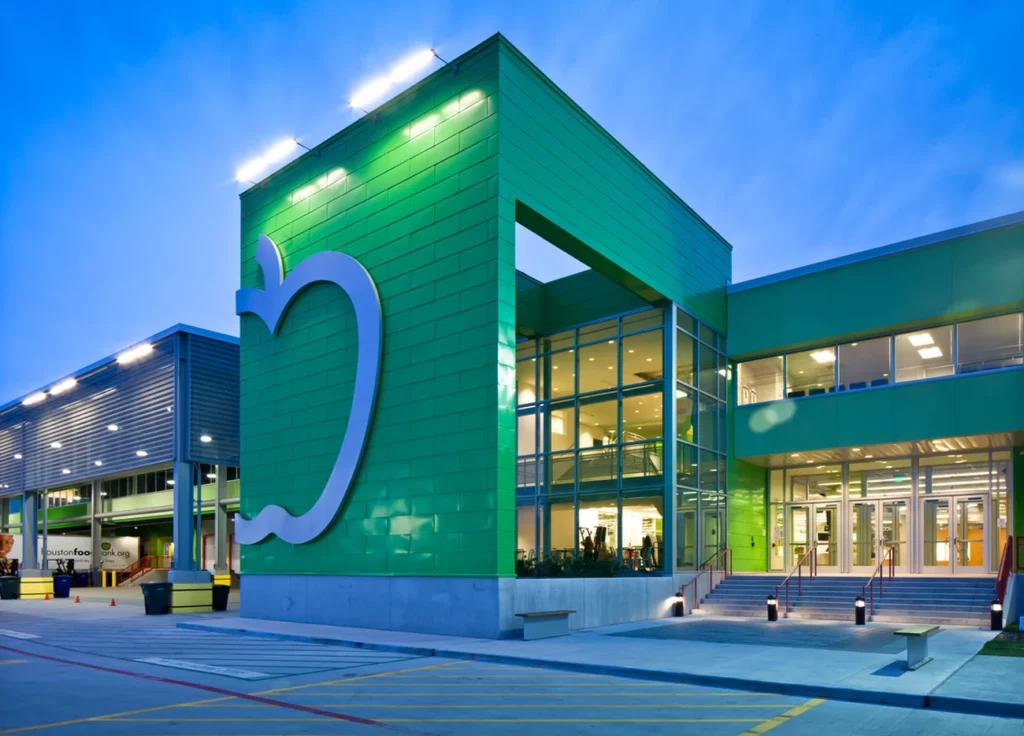
Overview
The Houston Food Bank (HFB) utilized their investment from UDF to rehabilitate and add space to their current properties and to move the location of their kitchen to this updated site in order to combine programs and reduce costs. The kitchen was previously located separate from the main warehouse, where most volunteers are used and this created a logistical challenge for the operation to adequately utilize their volunteer base.
On a typical day in southeast Texas, 5,000 children are hungry–they have nothing to eat because their families can’t afford food. One in four children in southeast Texas is considered food insecure, meaning they live in homes with inconsistent access to suicient nutritious food–or, they are at risk of hunger.The Houston Food Bank, one of the nations’oldest and largest,is the greatest source of food for hunger relief in 18 southeast Texas counties. The operations are staffed primarily by inmate volunteers, probationers and civic volunteers who contribute over 100,000 volunteer hours annually. The Houston Food Bank meets the need for nutritious food in low-income communities by partnering with and supporting a network of nearly 500 food pantries, soup kitchens, senior centers and other agencies, feeding a total of 137,000 people each week, providing more than 53 million nutritious meals annually.
Known for the efficiency and cost effectiveness of its programs, HFB has increased its total food distribution by over 30% since 2011. Even with this growth, it has been a struggle to meet the needs of the Houston area, where over 1 million people lack access to enough food to meet their basic needs, with over half of those in need being children. As the needs of the client have grown immensely due to the economic conditions and recent hurricane damages in the area, it had become clear that the existing facility was inadequate. To meet the growing issue of hunger and expand its distribution capacity over three-fold, the HFB renovated a neglected, thirty year old former Sysco Distribution Center.The 290,000 SF building contained large warehouse facilities, freezer building and a truck center. The renovation was completed in October 2011 and HFB opened its new Portwall facility to the community.
UDF’s involvement in the project happened several years later when the Portwall facility was in need of even more expansion. This component included renovation of the existing building and addition of 10,000 square feet to create a 308,000 SF facility for the entire Houston Food Bank operations. The building function expanded to accommodate offices, classrooms, conference and social services component, and a community center as well as to accommodate for the operation of the Mary Barden Keegan Center to move to the 10,000-square-foot kitchen inside the facility
Project Financing
UDF provided loans totaling $9.1 million for this project. UDF utilized NMTCs in order to provide Houston Food Bank with two loans totaling $6,500,000.These loans incorporate many better-than-market features, including rates more than 50% below market, interest only for the entire term, and lower than standard debt service coverage. The New Markets Tax Credit (NMTC) program provided a substantial infusion of funds for the Houston Food Bank’s purchase and renovation of the new facility. The shared vision of greater service to the community coordinated the interaction with HFB and UDF and illustrates how the various investors came together to fight hunger in southeast Texas. During the construction,the Houston Food Bank continued its $6.4 million fundraising campaign for its kitchen expansion.Subordinate financing was contributed by UDF at advantageous terms including interest-only for the 7-year terms, below-market interest rates, and lower-than standard origination fees. Without the NMTC, the project was unable to fill a funding gap needed to complete construction. UDF lent the necessary funds to finish the development at terms that were unavailable from other lenders.
Community Impact
The investment from UDF was used to build expanded production kitchen facilities to feed more hungry and food insecure children. By relocating and expanding the kitchen, HFB is able to quadruple the number of meals served per day from 4,000 to 16,000. This ensures that HFB is better able to meet the demand for this program where 600,000 local children qualify yearly. Before the expansion HFB routinely had to turn down additional children and service providers due to the limitation of the kitchen facilities at the time. HFB also used UDF’s financing to build a 3-story wing addition to the Portwall Warehouse. HFB is located in a severely depressed census tract and is also located in a federally designated food desert and provides access to fresh, healthy food for those in the community that are in need.
The Houston Food Bank feeds hungry people through partnerships alongside community organizations with resonating missions such as: Brighter Bites, which empowers underserved families to choose better, brighter foods by providing fresh produce and nutrition education for greater health; Meals for Minds, Food distribution in schools, a project funded by Target; Texas Hunger Initiative, a project focused on developing and implementing strategies to end hunger through policy, education, research, community organizing and community development; H.E.A.R.T., a vocational training program serving adults with developmental disabilities, H.E.A.R.T. clients maintain vending machines at the Portwall warehouse; Hunger Free Texans provides free, educational learning conferences for nonprofits and others in the area of food,nutrition, wellness and healthy communities.In some cases, HFB provides office and/or warehouse space at a nominal rate in support of their activities.
Every dollar donated provides approximately three meals for one person. The organization boasts 70,000 volunteers and each year distributes almost 100 million pounds of food that may have otherwise gone to waste to those in great need. To support demands, HFB relies on thousands of community volunteers and hundreds of correction department inmates and probationers while providing critical social services. Relocating the kitchen enables the Houston Food Bank to increase its capacity fivefold, to 20,000 meals a day. The new kitchen is able to accommodate up to 80 volunteers at a time to help reach maximum capacity. Kitchen volunteers provide essential help, from peeling and chopping fresh fruit and vegetables, to scooping servings of food into partitioned trays. The state of the art equipment in the new kitchen facilitates streamlined processes and higher efficiency. The new kitchen includes many features such as: a demonstration kitchen for nutrition education classes and culinary arts training, plentiful freezer and cooler space to store three days’ worth of food.
The kitchen continues to be named after Mary Barden Keegan, a community volunteer and activist who founded the End Hunger Network in 1985, which merged with the Houston Food Bank in 2008. Mary Barden Keegan founded the End Hunger Network in 1985. The Keegan Center building was completed in 2006, and the Houston Food Bank merged with End Hunger rNetwork in 2008. With facility expansion and relocation of Keegan Kitchen, The Houston Food Bank is able to provide even more meals and services to those in need and serve the community in numerous and impactful ways:
- 74 million nutritious meals to 800,000 people in southeast Texas yearly, for families and individuals who face challenges in getting enough nutritious food for a healthy life.
- 3,909 children had a hot meal at the end of a school day through the Kids Café program,one of the nation’s largest for production of hot meals. A small fleet of trucks delivers the food in insulated containers that hold safe temperatures until meals are served Monday Through Friday. These meals are prepared for school aged children and served at after-school and summer program sites. The Kids Cafe program currently feeds children at 80 after school program sites, with an ongoing goal to increase this number yearly.
- 10,538 kids took home from school a sack of nourishing food for the weekend through the Backpack Buddy program where nutritious kid-friendly food is provided for the weekend for at- risk children in schools grade K-12, as well as at summer meal program sites.
- The Food for Change program provides food to individuals as a motivation to complete programs that can potentially lift them out of poverty or improve their lives. Ultimately,Food for Change would reduce the number of families who need food assistance and lead them to self-sufficiency.
- Utilizing power from the roof of the Food Bank warehouse, rows of solar panels transform sunny days into electricity. With over $300,000 in grants, 440 solar panels offset utility expenses while generating the equivalent of three meals per hour.
- HFB also facilities an emergency food pantry onsite for access in off hours.Operated in partnership with the Emergency Aid Coalition, this pantry is open extended hours to serve working families and individuals.